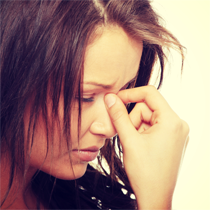Chiropractors Role in Treating Headaches
 Headaches in Australia
Headaches in Australia
Headache is one of the most common medical complaints. According to a 1995 Australian Bureau of Statistics survey, 2.2 million people reported headaches starting in recent times while 22,000 reported headaches occurring with unspecified causes over the longer term with the higher prevalence among people in the age bracket 25-44 years. Moreover, almost 15% of the Australian population was taking medication for headache.
One particular result worth mentioning in a study published by Journal of Clinical Neuroscience in 1998 is the fact that although headache and migraine are common disorders in Australia, migraineurs may not regularly seek professional advice regarding treatment and if they do, they will seek advice from general practitioners (23%), pharmacists (11%), dentists (7%), chiropractors (4%), medical specialists, physiotherapists, eye practitioners, and masseurs (each 2%).
Headache Basics
The head is one of the most common areas of pain in the body. Although there are 150 diagnostic categories, headache is classified into three major categories based upon the source of pain – primary; secondary, and; cranial neuralgias, facial pain, and other headaches. Headache is actually a broad term that encompasses pains occurring in any region in the head, both sides of the head, or isolated to a certain location in the head. Normally, people who suffer from headache describing the discomfort as sharp, pulsating, throbbing, appearing gradually or suddenly in some areas in the head, and may last from less than an hour to a couple of days.
Primary Headaches
The most common type of headache, which are also the most common type of headaches among adults and adolescents are the tension headaches, also called chronic daily headaches or chronic non-progressive headaches. Tension headaches also occur more commonly in women than men. Migraine, the second most common form of primary headache and ranked as the seventh-highest specific cause of disability worldwide, falls to this category and generally affects children as well as adults with more women than men are affected after puberty. While primary headaches are not life-threatening, they can be associated with underlying symptoms of a more serious illness.
Secondary Headaches
This category includes a broad classification of medical conditions ranging from dental pain from infected teeth or an infected sinus, to life-threatening conditions like bleeding in the brain or infections like encephalitis or meningitis. Headaches associated with substance abuse and excess use of medications used to treat headaches are all part of this category. Brain freeze (ice cream headaches), stroke, dehydration, influenza, and concussion are also typical examples.
Cranial Neuralgias, Facial Pain, & Other Headaches
Cranial neuralgia describes inflammation of one of the 12 nerves that supply the motor and sensation function of the head and neck. Trigeminal neuralgia is the most commonly recognized example in the category. The inflammation of the trigeminal nerve causes intense facial pain that can contort a face causing the head to move away from the pain.
Headache and Chiropractic care
Since most headaches are caused by non life threatening origins, they can be relieved through appropriate treatment. Headaches are rarely a sign of a serious health problem and figures show that only one in 11,200 patients with headache have a problem that shows up on MRI or CT scans. Thus, it is always important to have the problem thoroughly investigated by a specialist especially if the headache worsens with another symptom, or fails to improve with medication.
Generally, headache is a common condition among patients with chiropractic problem brought about by problems in ones spinal bones in the neck that aren’t supporting the head properly. This condition can affect nerves, muscles and even the blood supply to your head. Mechanical dysfunction (e.g. falls, accidents, poor posture, and repetitive stress) on the vertebrae of the neck increases muscle tension, as well as irritate the nerves.
Chiropractors are well-trained to recognize signs of rare problems in order to properly managed headache patients. Chiropractic care will help eliminate the common cause of headaches by adjustments (restoring spinal curves, normalising spinal function), soft tissue therapy (trigger point stimulation, myofascial release), Posture correction exercises, as well as co-management with other health care providers.
